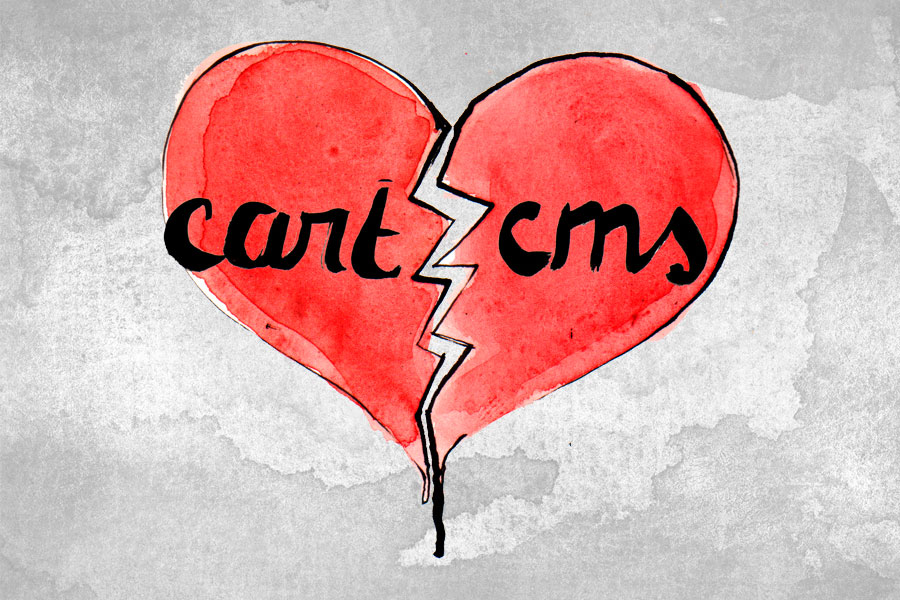We invited the E-business Coach, Patrick Pitman, to explore how niche merchants thrive amongst the Internet’s biggest retailers? FoxyCart enables anyone to easily, securely sell online. We’ve found in Patrick someone who similarly champions ecommerce entrepreneurs. But given our tools, how do you compete and thrive? Here’s part 1 in an occasional series…
If you’re a niche merchant, you’re selling something unusual, uncommon. Maybe you make and sell in small batches, or deliver in a way that’s not available elsewhere. What if your niche status changed how you operate your ecommerce website — even the tools with which you build it? An idea: celebrate the fact that only someone special like you could bring your products to market! Feature that special expertise when building your ecommerce website, in how shoppers learn about your selection! Tap into the passion that inspired your expertise and share this on the pages of your website! In short, cherish the specialness that can’t be found in the big box stores, online or off — and then tell website visitors and subscribers all about it… This is why publishing matters so much to the niche ecommerce merchant. Let me explain…
Your story is better than ‘sale’
If you unconsciously emulate the unsophisticated tactics of Main Street, or the big dog retailer tactics you see on TV, you’ll likely settle for shouting ‘sale’. To shout ‘sale’ is the kind of message that fits nicely on a window sign, or in 30 second radio or TV spot. It’s a short and universally understood story. But you, as a niche ecommerce merchant, have a world of possible online buyers to draw from, unlike the desperate Main Street proprietor. And you, as a niche ecommerce merchant, ought not aim to make it up on volume with big financing; you’re unlike the big dog, mass retailers who advertise on TV. Instead, you can tell a different story, a longer story, a better story than ‘sale’.
More like a ‘novel’ than an ‘ad’
Here’s a beautiful thing about ecommerce: it can be a long-form message. It’s a medium that lends itself to longer (or more) stories. In an ecommerce context, you aren’t limited to shouting ‘sale’ in 30 seconds or on a sign. Instead, you can:
- explain what makes you wonderfully unusual in a hundred ways; visitors can read about it, listen to it, watch it.
- reel in customers over time with emails; send stories they look forward to opening.
- Social media can show credibility among your customers’ peers; feature customer stories as ‘social proof’.
The path to profitable niche retailing online is paved not with shouting ‘sale’, but with stories. The best stories become ones we want to live out ourselves, that we want to buy into. Want a vision to aim for? Imagine customers saving up, lining up, to become part of your story, and paying full price for the privilege. Imagine how your website might be organized if that were its objective. I work with a company owner who described his retail-direct manufacturing business as an unfolding novel. I love that, and learn from it. Any entrepreneur’s company can feel like a dramatic saga at times, as you might imagine a novel to be, but this guy was talking about the conversation he was having with customers. In essence, he’s describing himself as a story-teller.
Telling stories we want to buy into
Others might call it ‘content marketing’ to describe this company’s activities, but the owner knows none of that jargon. He just intuitively recognized the significance of spinning tales that his customers wanted to be caught up in, and holding a little back so they want more. Customers wanted to read all about it, to his chagrin. They root for his success. And when their package arrives, they open it up feeling like they know something others don’t. They buy having recognized and reached for the niche difference through stories. This merchant’s word to describe ‘it’ was novel, but another word might be publisher. Nevertheless, a narrative runs through all products, their origins, their manufacture, and on through customers’ experiences using them. The website, unbounded by word count or page length or printing costs, chronicles these adventures. How does it work? Prospective customers read / watch / listen and then save up to buy and join the story. The brand’s story, and the owner’s ability to deliver on its promises, drives the online business to continued growth.
Publishing stories comes first
Which is where FoxyCart comes into perspective: it responds to VISA’s mandate for security but flexibly sits atop whatever website publishing platform suits the merchant’s story-telling needs. FoxyCart complements a content management system. The cart (in all its integrity / security) is there when you need it, but doesn’t run the show. The “content is king” refrain may be something you’ve heard before but it holds true for niche merchants, too. A strategy of stories-not-discounts blurs the distinction between merchant and publisher. Publisher? Novel? The term is no matter, but a story must play itself out on the pages of your website. WordPress’ ascendancy in the website-building world shows how people recognize the power of the publisher. We are all self-publishers now. Content really is king.
And—and this is the important part—I love the fact that you can have a secure ecommerce site with FoxyCart riding atop WordPress—or any other more suitable content management system.
I love how with this arrangement of ecommerce tools, the dog wags the tail, as it should. Too often the tail (PCI compliance, cart features, etc.) wags the dog (the story, the romance, the branding).
Romance the customer, then get their card #
Security mandates can drive merchants into PCI-certified catalog and cart systems that are not oriented towards publishing. While such systems can help you choose size / color and sort across categories, (and then collect a credit card securely), damned if you can get them to serve up a novel’s worth of customer-romancing stories. That’s why shopping carts must take a back seat to publishing.




